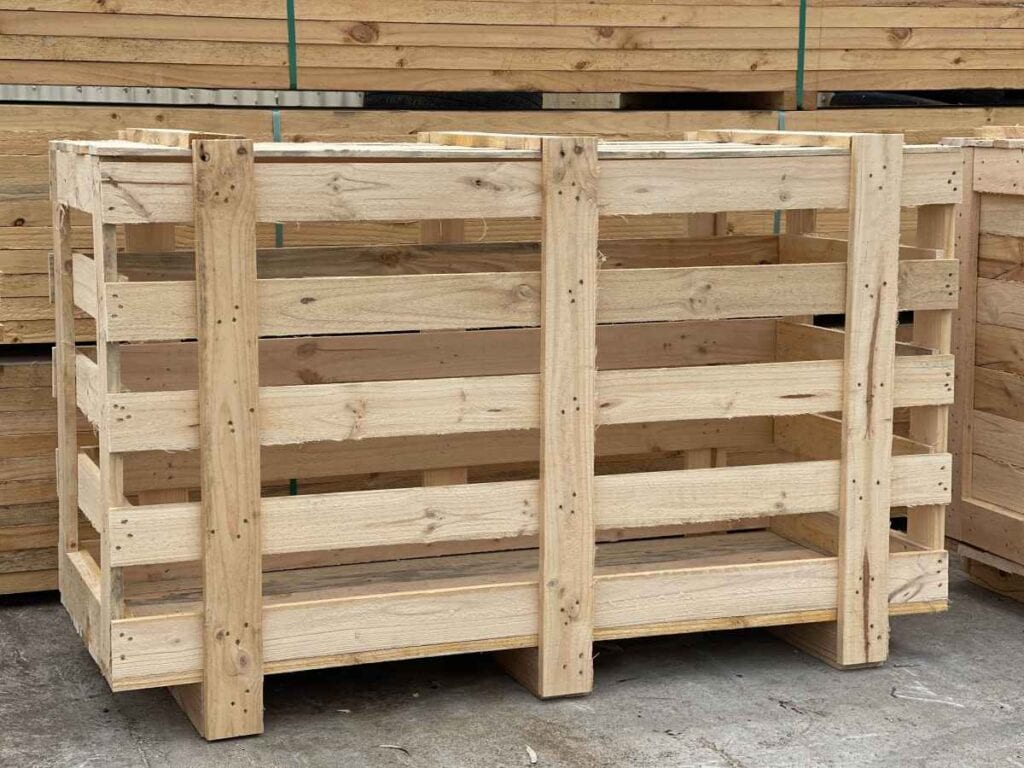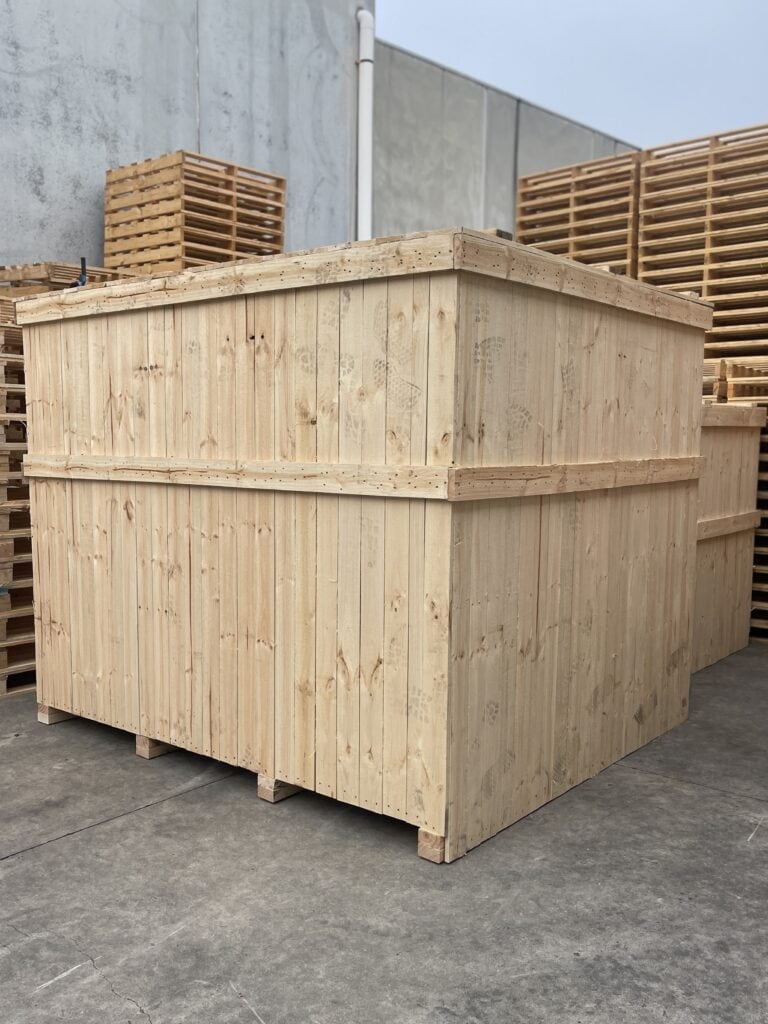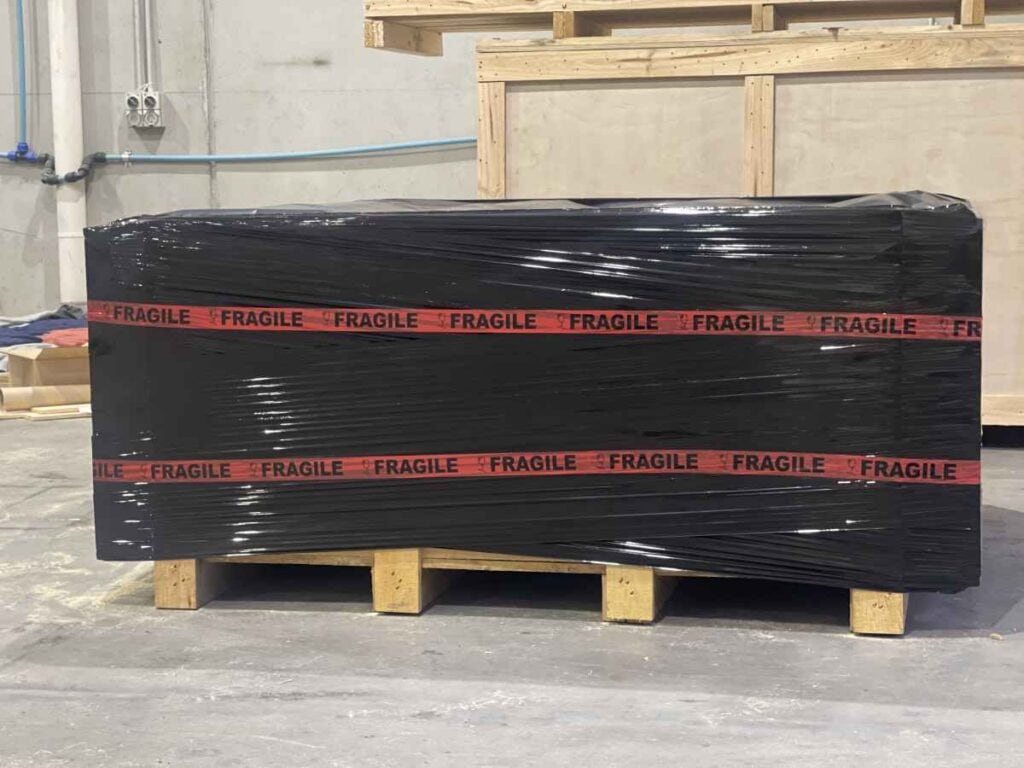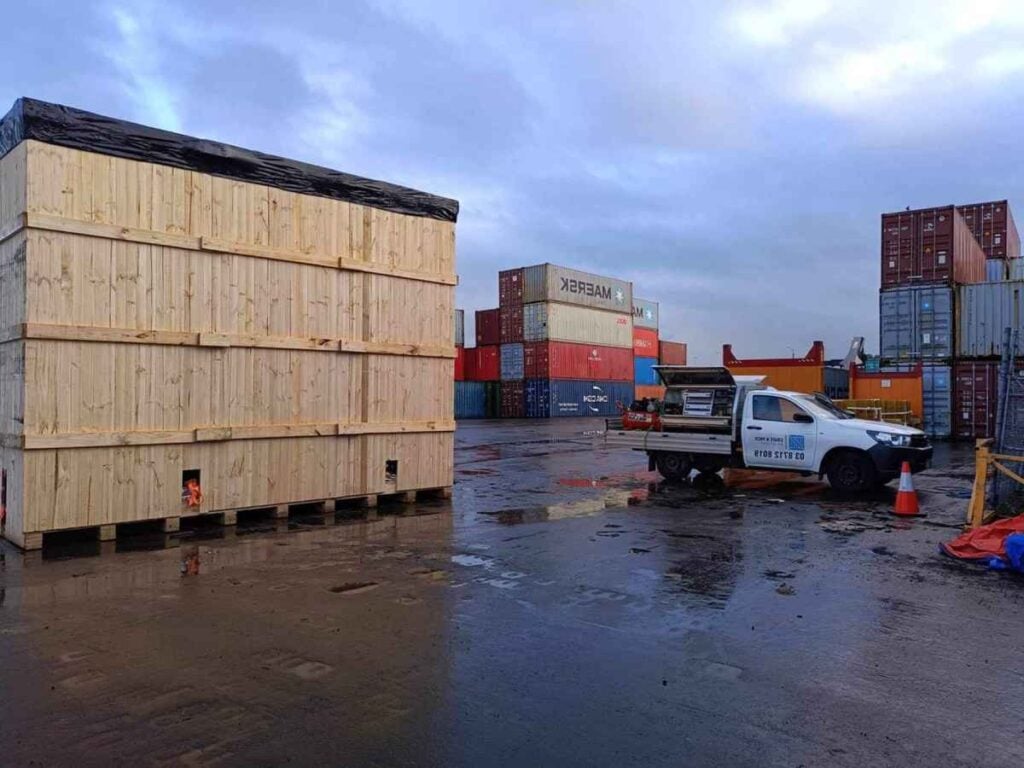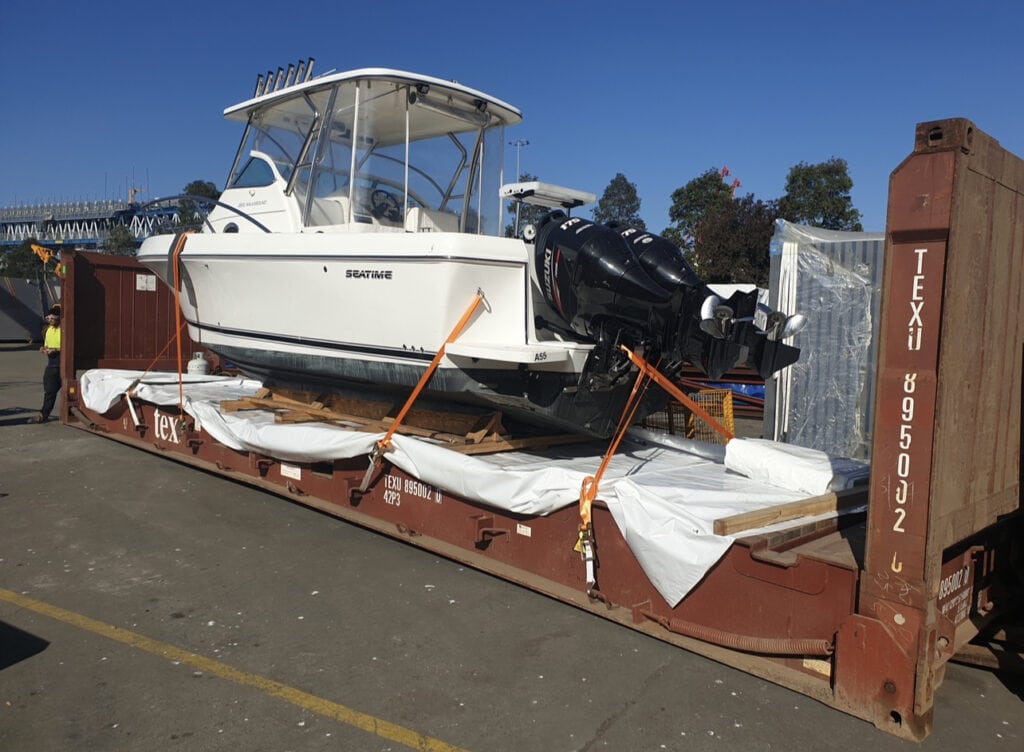Let's discuss the difference between shrink wrap and stretch wrap..
When it comes to packaging, where precision and safety are of the utmost importance, picking between stretch wrap and shrink wrap can have a major impact on the durability and aesthetics of your goods.
When it comes to protecting and securing items for use in storage, shipping, and display, stretch wrap and shrink wrap are two unique solutions that use different materials and procedures.
While both are useful for maintaining position, there are notable distinctions in how they are used, the qualities of the materials used, and the outcomes. Learn the differences between stretch wrap and shrink wrap so you can choose the best packaging method for your needs.
Stretch wrap, or stretch film, is an elastic and stretchable plastic film. Products can be held together on a pallet or in individual units by stretching this packing material over them, producing a secure and protective barrier.
Stretch wrap's pliability allows it to closely follow the contours of the things being shipped, securing them and preventing them from shifting around too much. Heat is not necessary to apply stretch wrap because it sticks to itself without any additional adhesives.
This approach can be adjusted to meet a wide range of requirements for packaging due to its adaptability in terms of thickness, colour, and application.
Shrink wrap, on the other hand, uses heat to securely shrink a plastic film around objects instead of pressure. Shrink wrap is available in rolls or bags, and when heated, the material shrinks to fit its contents.
This results in a secure and tight package that protects the contents and makes it difficult to tamper with them. In the retail and food industries, shrink wrap is frequently used to package single goods or smaller bundles.
It's clean and uncluttered, making the product easier to see. However, in order to get the best results using shrink wrap, specialised tools like heat guns or heat tunnels are needed.
Why Use Stretch Wrap?
Stretch wrapping involves applying a lengthy, flexible film on a surface, either cold or warm. The item is wrapped until it is entirely enclosed and secure from any potential damage.
To get the same tight finish and glossy shine on shrink-wrapped products, polyolefin shrink wrap material must be wrapped around the product and heated to 100 to 150 degrees Celsius.
Produce, fruit, and meat trays are typical uses for stretch wrap. Food packaging is only one of the many applications for shrink wrap.
When moving or storing items, stretch wrap is prefered over shrink wrap. Shrink wrap, on the other hand, is typically used to shield a single object from dirt and moisture or to compactly bundle a number of smaller goods.
Why Use Shrink Wrap
Stretch wrapping is a more popular method than shrink wrapping for protecting pallet loads. Although shrink wrap is more expensive than stretch wrap, it is often the better choice when packaging heavy or bulky items or those that are easily damaged. Moisture damage can be minimised by using shrink wrap because it can be either airtight or ventilated.
A shrink polythene hood and, typically, a gas flame handgun are used for shrink wrapping pallet loads.
The process of shrinking the film usually consists of two steps: sealing and shrinking. To seal, simply form a bag or sleeve out of film large enough to enclose the item.
The second step involves shrinking the polyolefin shrink wrap by applying heat to the package's contents. The film will have been stretched out during production, but when heated, the material's elastic memory kicks in, and the molecules shrink back to their original size.

This secures the polyolefin shrink film around the product for temporary protection. Check out our detailed guide if you want to learn more about shrink-wrapping freight pallets.
Kempner is the industry standard when it comes to supplying shrink wrapping equipment and supplies, and they also have a wide range of pallet stretch wrap sizes and gauges. Contact us if you need help determining if polyolefin shrink wrap or shrink wrapping machinery is a better fit for your company.
Advantages Of Stretch Wrapping
Since the invention of stretch wrapping, many methods have been devised for neatly packing goods into pallets. When using a hand-held stretch film roller, a worker can "hand wrap" a pallet, securing the cargo as they walk around the pallet.
This approach may be helpful for certain people right now, but it isn't always the most efficient.
There is a lot of bending and twisting required in wrapping a pallet completely, and the amount of bending and twisting depends on the size and shape of the pallet. Hand wrapping forces the worker to walk in circles, which might make them dizzy and increase the risk of injury even when the pallets are neat and square.
Since job injuries create downtime, expensive insurance costs, and workers' compensation, hand wrapping could lead to inefficiencies in the supply chain process. It's possible that you'll have to find and train a substitute worker, which will add even more expense.
Stretch wrapper machines, in contrast to hand wrapping, have powered film supply systems that stretch the film to greater lengths. Since less film is used to enclose the pallet, this typically results in savings of 25% to 40%.
On the other hand, when hand-wrapping, most employees who use hand-held stretch films don't stretch them more than 50 per cent. The average user stretches hand wrap by less than 15%, according to a national study of real-world applications (B2BInd), which reduces the stretch film's ability to handle a shifting load. If pallets aren't covered securely, they could collapse during transport, damaging whatever they were carrying along with them.
An individual operator can wrap multiple loads by hand, but a machine's performance is far more consistent.
Advantages Of Shrink Wrap?
Shrink wrap is useful because it creates a hermetic seal around whatever is being packaged. By applying heat, the plastic sheet shrinks and forms to the shape of the contents, creating a secure and tight package.
This forms a barrier that prevents the infiltration of harmful substances, including dust, dirt, and moisture. In addition, tamper resistance is improved with shrink wrap because any attempt to open the container is immediately noticeable due to the film's tightness.
This benefit is especially important in sectors where product security and authenticity are top priorities.
The translucent quality of shrink wrap is an additional key benefit, as it enables for better product visibility and presentation. Shrink wrap allows for an unobstructed view of the goods, in contrast to more conventional forms of packaging.
This is especially useful in retail settings since customers typically prefer to examine a thing up close before making a purchase.
With shrink wrap, the product's features, quality, and branding are all highlighted for maximum visual appeal. Customers' impressions and decisions to buy could benefit from this straightforward and attractive presentation.
In addition, shrink wrap provides efficient and low-cost packaging options. When compared to alternative packaging processes, the method's reduced material requirements result in lower material costs.
The lightweight nature of shrink wrap also helps to optimise shipping costs by minimising weight and volume. Also, employing specialised tools like heat tunnels, shrink wrap applications can be accomplished rapidly and easily.
Businesses may streamline their operations and keep up with production needs because of the time saved during the packaging process thanks to this efficiency.
Difference Between Stretch Films And Shrink Wraps
Due to their similarities in appearance, stretch films and shrink wraps are sometimes misidentified. Although they both seem like translucent plastic films and serve the same purpose in packing and palletising, these materials couldn't be more dissimilar.
Here, we set the record straight by outlining the four key ways in which different packaging materials vary from one another.
Materials And Properties
Linear low-density polyethelene (LLDPE) is used to create stretch films. This feature allows the material to be stretched before breaking, and it also makes it more resistant to punctures.
Shrink wraps, on the other hand, are constructed from heat-sensitive PVC or polyolefin, which allows the wrap to contract around its contents for added security.
Use And Application
Stretch films can be applied manually or with the assistance of a machine. The elasticity of the material is used to bind the loads together when it is wrapped and turned around the pallets.
Palletising for transit or storage requires the use of certain specific packaging supplies. They are useful for keeping loads together and avoiding moving because they are elastic and resistant to puncture.
Different methods exist for applying shrink wraps. They are first hand-wrapped loosely around the goods and then shrunk using a heat gun. Shrink wrap may be readily and uniformly applied using a machine.
Although shrink wraps are sometimes used for palletising, their primary application is in product packaging, where they offer protection against the elements, abrasion, dust, and other contaminants.
Varieties
When shopping for stretch films, what should you look for specifically? For convenience, some stretch films can be purchased pre-stretched. Coloured options (for simpler stock/product classification and segregation), anti-static options (for electronic products), and UV protection options (to prevent damage from sunlight) are just a few examples of the many variations available from other packaging companies.
If you're looking into shrink wraps, it's a good idea to enquire with your packaging supplier about additional shrink wrap options that are laminated with unique plastics. Meats, fruits, vegetables, and cheeses are just some of the foods that can be packaged in shrink wrap. Not to be mistaken with glad wrap, they serve as an extra layer of defence.
Price

Finally, stretch films are more cost-effective than shrink wraps because they don't need power to be applied. When it comes to palletising, shrink films are typically more expensive than stretch films and require a heat gun for an even shrink. However, unlike stretch films, shrink wraps can be used for a wide variety of purposes.
You can save time and money by using the right packaging supplies in your company. If you use packing materials for their intended function, you may make the most of them to satisfy your requirements.
Conclusion
Stretch wrap and shrink wrap are both ways to package things, but they use different materials and have different results. Stretch wrap is an elastic and stretchable plastic film that can be used to secure goods on pallets or on their own, creating a safe and secure barrier. It sticks to itself without any extra glue and can be changed to fit different packing needs.
On the other hand, heat is used instead of pressure to shrink a plastic film around an item so that it stays in place. It is often used in the retail and food industries to package single items or smaller groups of items in a way that is neat and tidy. To get the best results, though, you need tools like heat guns or heat tunnels.
Stretch wrap is better for moving or keeping items, while shrink wrap is used to protect a single item from dirt and moisture or to wrap up a bunch of smaller items into a tight bundle. Even though shrink wrap is more expensive, it is often the best way to package heavy, bulky, or easily broken things.
Stitch wrapper machines have driven systems that feed the film and stretch it to longer lengths. This saves 25% to 40% of the cost of the film. However, hand-wrapping may not be the most efficient method because it requires a lot of bending and twisting. This can cause accidents and make the supply chain process less efficient.
Heat is used to make an airtight seal around a product wrapped in shrink wrap. This is a useful way to package something. It makes a safe, tight package that keeps dangerous things from getting into the container. It also makes it harder to change, which makes it perfect for industries that care about product security and validity. Because shrink wrap is see-through, it makes products easier to see and look more appealing to buyers.
Shrink wrap works well and doesn't cost much because it uses less material and is light. It can be put on by hand or with the help of a machine. Stretch films, on the other hand, are made of PVC or polythene, which melts when heated. Stretch films can be used to put things on pallets, while shrink wraps are used to package things.
Shrink wraps can be pre-stretched, coloured, anti-static, or made to be resistant to UV light. They can be used for meats, fruits, veggies, and cheeses, among other things. Stretch films are cheaper than shrink wraps because they don't need electricity to be used. But shrink wraps can be used for a lot of different things.
Using the right packaging products can save time and money, making it easier for businesses to meet their packaging needs.
Content Summary
- Stretch wrap and shrink wrap are vital for packaging, each having unique attributes and applications.
- Stretch wrap is an elastic, stretchable plastic film often used for bundling products together.
- Shrink wrap requires heat to secure a plastic film around objects, providing a tight and secure package.
- Stretch wrap is self-adhesive and doesn't require heat for application, making it simpler to use.
- Shrink wrap often demands specialised equipment like heat guns or tunnels for proper application.
- Stretch wrap is favoured for moving or storing items, usually in pallet loads.
- Shrink wrap is commonly used in retail and food industries for single items or smaller bundles.
- Stretch wrapping can be applied cold or warm and is a more popular choice for pallet loads.
- Shrink wrap can either be airtight or ventilated, offering additional protection against moisture.
- The process of shrink wrapping involves two steps: sealing the film around the object and then applying heat.
- Stretch wrap is usually applied either manually or with a machine, often requiring a worker to walk around the pallet.
- There are risks of injuries in the manual application of stretch wrap due to bending and twisting movements.
- Stretch wrapper machines can save 25% to 40% film compared to manual hand wrapping.
- Shrink wrap provides a hermetic seal, protecting the packaged items from dust, dirt, and moisture.
- One advantage of shrink wrap is its tamper resistance, important for product security and authenticity.
- Shrink wrap is translucent, offering better visibility and presentation of the packaged product.
- Stretch films are made of Linear Low-Density Polyethylene (LLDPE), which allows it to stretch before breaking.
- Shrink wraps are made of heat-sensitive PVC or polyolefin, contracting when heated.
- Stretch films can be applied manually or mechanically, depending on the specific needs.
- Shrink wrap requires heat for application, either through a heat gun or a heat tunnel.
- Shrink wrapping is typically more expensive than stretch wrapping, but offers better security for certain items.
- Stretch wrap can be customised in terms of thickness, colour, and application.
- There are different types of stretch films available, including pre-stretched, coloured, and UV-protected options.
- Shrink wrap also comes in variations that are laminated with unique plastics for specific applications.
- Stretch wrap is generally more cost-effective as it doesn't require electricity for application.
- Shrink wrap, however, offers more versatility in its range of applications.
- Stretch wrap is commonly used in food packaging for produce, fruit, and meat trays.
- Stretch wrap helps in stabilising loads during transit due to its elasticity.
- Shrink wrap is often used for packaging individual products to protect against elements and contaminants.
- Kempner is considered an industry standard for supplying shrink wrapping equipment and supplies.
- Stretch wrap is more efficient for larger pallet loads, especially in storage and shipping contexts.
- Shrink wrap material must be heated to between 100 and 150 degrees Celsius for optimal results.
- A study showed that hand-wrapped stretch films are often not stretched beyond 50%, affecting their efficiency.
- The risk of pallets collapsing during transport is minimised when using machine-operated stretch wrapping.
- Shrink wrap enhances the product's features, quality, and branding due to its transparency.
- Stretch wrap doesn't require additional adhesives as it sticks to itself.
- Due to the lightweight nature of shrink wrap, it helps in minimising shipping costs.
- Stretch wrap is more puncture-resistant, making it ideal for securing heavy loads.
- Shrink wrap is especially useful where an unobstructed view of the product is beneficial for retail sales.
- The use of stretch wrap can potentially reduce insurance costs associated with worker injuries.
- Shrink wrap forms a tight package that makes tampering difficult and immediately noticeable.
- Shrink wrap is more suited for products that require a higher level of protection and presentation.
- Stretch wrap is versatile, easily adapting to various packaging requirements.
- Specialised tools can make the application of shrink wrap fast and efficient, saving time in the packaging process.
- Stretch wrap's elasticity helps in binding loads together, making it ideal for palletising.
- Shrink wrap's contracting feature offers added security and protection against contaminants.
- Stretch films are useful for keeping loads together during transit or storage, thanks to their elastic nature.
- Shrink wrap's airtight or ventilated options help in minimising moisture damage.
- The use of stretch wrapper machines provides consistent performance compared to hand wrapping.
- Picking between stretch wrap and shrink wrap ultimately depends on the specific needs of your company and the products being packaged.
Frequently Asked Questions
Stretch wrap is a stretchable plastic that is wrapped tightly around a load of products. The elasticity of the stretch wrap is what keeps the load together. In contrast, shrink wrap can be loosely applied to a product and will shrink to securely cover the product once heat is applied.
The short answer is yes. Stretch film is generally made with linear low density polyethylene (LLDPE) which is denoted as category four in recycling programs. For many plastics the real world answer is more complex.J
Stretchy baby wraps are perfect for newborns (0-5 months) and premature babies. Super comfy and dreamily soft, these baby wraps are one-size-fits-all and perfect for mums and dads. Simply tie the baby wrap around your body and pop your baby in.
A shrink of a function is the shrink in the vertical direction. It refers to that, for a value of x, the new function will have a lesser value, in the intervals with functions positive, or a greater value in the intervals with functions negative.
After the heat has been applied to the film, the film shrinks as the polymers return to their natural tangled state. A PVC film has the ability to shrink as much as 50% of its original size. The benefits of shrink wrapping come with making a package tamper-proof and keeps moisture out and light exposure.

